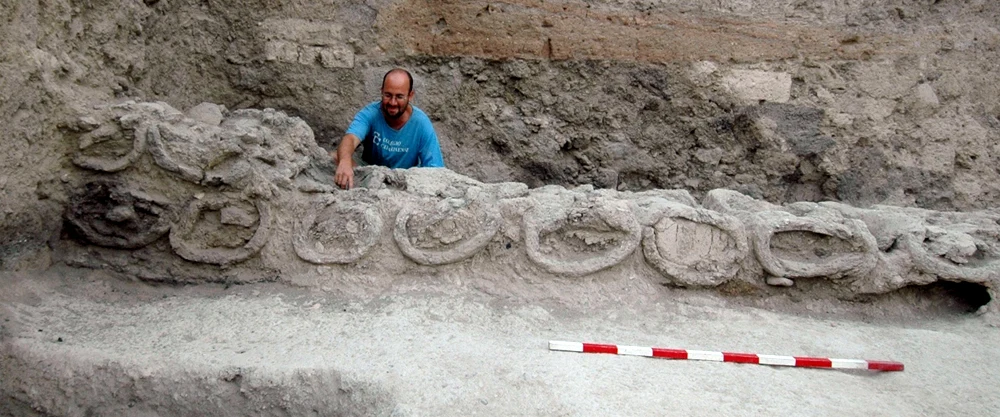Why Honey Never Spoils | Archaeologists Found 3000-Year-old Honey Pots That Are Still Edible!
Honey goes hand in hand with longevity, which is why ancient civilizations utilized it as a preservative in various ways. Honey never spoils!! However, the world’s interest in honey was piqued due to a significant archeological discovery. Archaeologists digging in the northern Israeli town of Rehov found evidence of an advanced beekeeping industry that dates back to 900 BC, which is 3000 years old. They also found some intact beehives as well. Another instance is honey pots that archaeologists found in the tomb of King Tutankhamun, all that controversy. Let’s explore why honey never spoils and dig into interesting details of ancient beehives as well.
Why Honey Never Spoils
The never-ending shelf life of honey is not a mystery—it’s backed by science. Honey’s ability to resist spoilage lies in its unique chemical makeup, which creates an environment where bacteria and microorganisms cannot thrive.
Low Water Content and High Acidity
One of the primary reasons honey never spoils is its extremely low water content. Most bacteria and microorganisms require water to grow and multiply. Honey, however, is only about 17% water, leaving very little available to support bacterial life. In addition to this, honey is highly hygroscopic, meaning it absorbs moisture from the environment, making it even harder for bacteria to survive.
Another factor that contributes to honey’s preservation is its acidity. Honey has a pH between 3.2 and 4.5, which is quite acidic. Most microorganisms, including those responsible for food spoilage, cannot survive in such an acidic environment. This high acidity, combined with its low moisture content, makes honey an uninhabitable environment for bacteria.
Hydrogen Peroxide Production
Honey also has a secret weapon—hydrogen peroxide. When bees produce honey, they add an enzyme called glucose oxidase. When honey comes into contact with water, glucose oxidase reacts with glucose to produce gluconic acid and hydrogen peroxide. Hydrogen peroxide is well-known for its antiseptic properties and is harmful to bacteria. This natural defense further protects honey from microbial contamination.
Natural Sugars and Its Viscosity
Honey’s high sugar content is another key to its longevity. Sugars like fructose and glucose make up over 80% of honey’s composition. These sugars create an osmotic environment that effectively dehydrates bacteria, causing them to shrivel up and die before they can multiply.
Additionally, honey’s thick, viscous nature prevents oxygen from reaching the few microorganisms that might survive its other defensive properties. Without access to oxygen, these organisms are unable to thrive, ensuring that honey remains fresh.
Enzymes and Antioxidants
Honey is also packed with antioxidants and enzymes that aid in its preservation. Antioxidants like flavonoids and phenolic acids protect honey from oxidation, which can spoil foods over time. The presence of these enzymes and antioxidants helps keep honey fresh for centuries, even millennia, as we’ve seen with archaeological findings.
Archaeologists Find 3000-Year-Old Honey Pots
The incredible preservation of honey was first put to the test when archaeologists discovered pots of honey in ancient Egyptian tombs. Some of these honey pots were over 3000 years old, yet they remained perfectly edible. The most famous example of this discovery came from the tomb of the Egyptian pharaoh Tutankhamun also a rather interesting find in West Asia.
The Discovery of Tutankhamun’s Honey Pots
Egypt is not where we find the most ancient honey in the world. That honor goes to Georgia. In the Borjomi region of that country, we find evidence of 5500-year-old honey. However, ancient Georgians were just harvesting honey from wild bees. It is in ancient Egypt that we find the earliest evidence of systemic domestic beekeeping.
In 1922, British archaeologist Howard Carter unearthed one of the most significant archaeological finds in history: the tomb of King Tutankhamun. Among the countless treasures and artifacts buried with the young pharaoh were pots of honey, perfectly sealed and still as fresh as the day they were placed in the tomb over 3000 years ago.
What is astonishing is that when the honey was tested, it was not only edible but still possessed its original taste and texture. The sealed environment of the tomb and the natural preservative properties of honey combined to keep the substance from spoiling. Egyptians considered honey a necessity for the afterlife.
Beekeeping in the Land of Honey and Milk

The Hebrew bible calls the ancient Israel, the Land of Honey and Milk. The archaeologists could not quite see the connection until 2007 when they found evidence of a very advanced beekeeping industry. This was in the Northern Israel town of Rehov. Archaeologist Amihai Mazar and his colleagues at Jerusalem’s Hebrew University found evidence of a 3,000-year-old beekeeping industry, including remnants of ancient honeycombs, beeswax, and what they believe are the oldest intact beehives ever found. These 30 intact hives date to around 900 B.C.
“You can tell that this was an organized industry, part of an organized economy, in an ultra-organized city,”
Archaeologist Amihai Mazar
The beehives, made of straw and unbaked clay, have a hole at one end to allow the bees in and out and a lid on the other end to allow beekeepers access to the honeycombs inside. They have orderly rows, three high, in a room that could have accommodated around 100 hives.
Why Ancient Civilizations Valued Honey
The reason honey was found in so many tombs and archaeological sites is that it held great importance in ancient civilizations. Honey was not only a sweetener but also used for medicinal purposes, religious rituals, and even as an embalming fluid. Egyptians, in particular, valued honey highly and believed it had healing properties. Its presence in tombs symbolized sustenance for the afterlife.
In addition to the Egyptians, the Greeks and Romans also cherished honey. They used it in a variety of ways, from sweetening their food to creating honey-based medicines. Its eternal shelf life made it ideal for storage and transport over long distances, especially in trade.
Conclusion
Honey’s remarkable ability to resist spoilage is rooted in its unique chemical composition, which creates a hostile environment for bacteria and microorganisms. Low water content, high acidity, the production of hydrogen peroxide, and its natural sugars all contribute to honey’s longevity. The discoveries of 3000-year-old honey pots in ancient tombs, such as those of Egyptian pharaohs and other archaeological finds, further validate honey’s reputation as nature’s eternal food. These ancient honey pots remain a testament to the remarkable properties of this natural sweetener, which has withstood the test of time and is still enjoyed today.
Also Read:
Liam Payne’s Final Moments: A Tribute to His Last Day in Buenos Aires
The U.S. Military Once Tried Building A “Gay Bomb” To Make Enemy Soldiers Attracted to Each Other!







